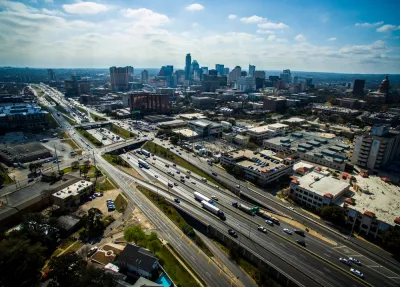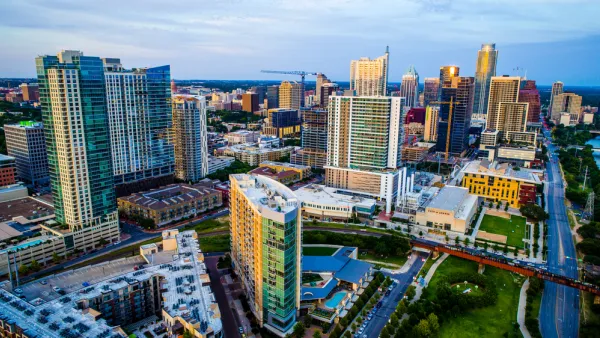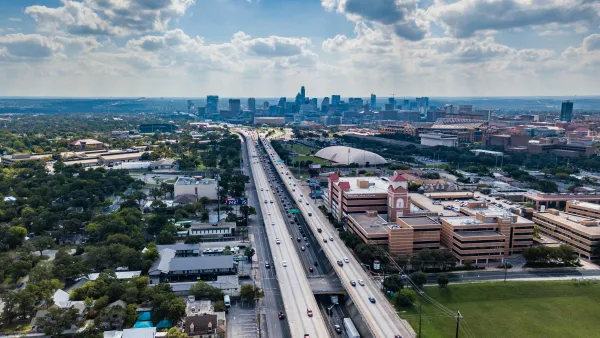After releasing "public scoping" details for a massive widening project in Downtown Austin, a writer slams the Texas Department of Transportation for its car-centric approach to transportation planning.

James Rambin reports that the Texas Department of Transportation has released new details of a plan to widen the I-35 Capital Express project to add capacity along eight miles of the freeway between US 290 East and SH 71/Ben White Boulevard. The "public scoping" presentation is available on YouTube, and linked above.
Rambin, who is explicitly critical of the TxDOT's proclivity for widening already massive public highways, notes that the first two design options shown in the video would bring the total number of lanes on I-35 to 20—up from the current 12 lanes. The article includes numerous cross sections to show what that many lanes would look like in reality.
Other than the massive size of the proposed expansion, Rambin says the plan currently has revealed very few details. With the possibility for bus rapid transit, light rail (via Project Connect), or toll lanes to be included in the project, TxDOT is clearly looking a different direction, however. Rambin explains:
The single major adaptation shown in these presentations are each design’s potentially grade-separated or tunneled HOV lanes, which might relieve gridlock slightly — but don’t overlook that the most effective high-occupancy lanes integrate congestion pricing in what’s known as an express HOT lane, and the state government under Gov. Greg Abbott has made it very clear in recent years that tolls are not an option here.
Among the criticisms expressed by Rambin: that the I-35 project would represent a generational failure if built as proposed in this presentation.
FULL STORY: Widening I-35 to 20 Lanes in Downtown Austin is the Anti-Project Connect

National Parks Layoffs Will Cause Communities to Lose Billions
Thousands of essential park workers were laid off this week, just before the busy spring break season.

Retro-silient?: America’s First “Eco-burb,” The Woodlands Turns 50
A master-planned community north of Houston offers lessons on green infrastructure and resilient design, but falls short of its founder’s lofty affordability and walkability goals.

Delivering for America Plan Will Downgrade Mail Service in at Least 49.5 Percent of Zip Codes
Republican and Democrat lawmakers criticize the plan for its disproportionate negative impact on rural communities.

Test News Post 1
This is a summary

Test News Headline 46
Test for the image on the front page.

Balancing Bombs and Butterflies: How the National Guard Protects a Rare Species
The National Guard at Fort Indiantown Gap uses GIS technology and land management strategies to balance military training with conservation efforts, ensuring the survival of the rare eastern regal fritillary butterfly.
Urban Design for Planners 1: Software Tools
This six-course series explores essential urban design concepts using open source software and equips planners with the tools they need to participate fully in the urban design process.
Planning for Universal Design
Learn the tools for implementing Universal Design in planning regulations.
EMC Planning Group, Inc.
Planetizen
Planetizen
Mpact (formerly Rail~Volution)
Great Falls Development Authority, Inc.
HUDs Office of Policy Development and Research
NYU Wagner Graduate School of Public Service





























